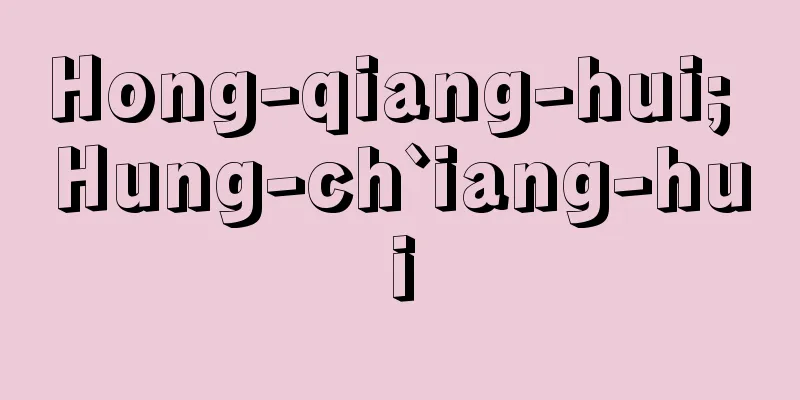Takiji Kobayashi - Takiji Kobayashi

|
Novelist. Born on October 13, 1903, to a fallen farming family in Shimokawazoe Village, Akita Prefecture (now Odate City). When he was four years old, his family moved to Otaru City, Hokkaido, relying on his uncle. With his uncle's support, he graduated from Otaru Commercial School and Otaru Higher Commercial School (now Otaru University of Commerce), and worked for the Hokkaido Takushoku Bank. From his childhood, he published works in alumni magazines, circulating magazines, and literary magazines submitted to the literary world, and also founded the coterie magazine "Clarte." During this time, he became an admirer of Shiga Naoya, and was further influenced by Gorky and Hayama Yoshiki. He studied social sciences and moved into proletarian literature, which led to the labor movement. In 1927 (Showa 2), he joined the Labor-Farmer Artists League (which later split into the Avant-Garde Artists League), and wrote the novella Snow Protection Forest (unpublished during his lifetime). He published March 15, 1928 (1928) in the All-Japan Proletarian Artists League's journal, Battle Flag, which depicted a group of Otaru workers who had been arrested and tortured in the March 15 Incident, and this quickly drew attention. He then published powerful works such as The Crab Cannery Ship (1929) and Absentee Landlord (1929), placing him at the forefront of left-wing literature, but was fired from Takugin and moved to Tokyo the following spring. He was arrested immediately after publishing Factory Cells (1930), and imprisoned for five months on suspicion of violating the Peace Preservation Law. After being released from prison in 1931, he led the literary movement with works such as "Orugu," "Dokubo," and "Yasuko" (all 1931), became secretary-general of the Japan Proletarian Writers League, and after joining the Japanese Communist Party, worked hard to establish the Japan Proletarian Cultural Federation. In the spring of 1932, he went underground and, as head of the party group for cultural organizations, wrote many critiques, including "Problems with Right-Wing Bias" (1932), and worked on his magnum opus, "People in the Period of Transition" (1931-32) (only the prologue was completed). On February 20, 1933 (Showa 8), he was arrested on suspicion of facilitating a spy, and was tortured to death the same day. This was shortly after the publication of "People in the District" (1933). "The Age of Transition" (working title "Party Lifer") was published posthumously. Although he tends toward somewhat schematic and conceptual themes, his clear writing style and imagination, which are consistent with the spirit of resistance and love of humanity and which introduce elements that appeal to the masses, remain fresh even today. [Masaru Ogasawara] "New Edition of the Complete Works of Takiji Kobayashi, 7 volumes (1983, Shinnihon Shuppansha)" ▽ "Tezuka Hidetaka's "Takiji Kobayashi" Volumes 1 and 2 (1973, Shinnihon Shuppansha)" [Reference] | |Source: Shogakukan Encyclopedia Nipponica About Encyclopedia Nipponica Information | Legend |
|
小説家。明治36年10月13日、秋田県下川沿(しもかわぞえ)村(現大館(おおだて)市)の没落農家に生まれる。4歳のとき一家は伯父を頼って北海道小樽(おたる)市へ移住。伯父の援助で小樽商業学校、小樽高等商業学校(現小樽商科大学)を卒業、北海道拓殖銀行に勤務。少年時代から校友会誌や回覧雑誌、文壇の投稿雑誌に作品を掲載、また同人誌『クラルテ』も創刊。この間、志賀直哉(なおや)に傾倒し、さらにゴーリキー、葉山嘉樹(よしき)に影響され、社会科学の勉強も積んでプロレタリア文学へと進み出、労働運動にもつながった。 1927年(昭和2)労農芸術家連盟(分裂後は前衛芸術家同盟)に加入、中編『防雪林』(生前未発表)を書く。三・一五事件で検挙拷問された小樽の労働者群像を描いた『一九二八年三月十五日』(1928)を全日本無産者芸術連盟の機関誌『戦旗』に発表し一躍注目を浴び、続けて『蟹工船(かにこうせん)』(1929)、『不在地主』(1929)の力作を発表、左翼文学の最前衛となったが、拓銀を解雇され翌春上京。『工場細胞』(1930)発表直後に逮捕され、治安維持法違反容疑で5か月間収監された。31年出獄後『オルグ』『独房』『安子』(ともに1931)などで文学運動の先陣にたち、日本プロレタリア作家同盟書記長となり、日本共産党に入党後は日本プロレタリア文化連盟の結成に尽力した。32年春、地下活動に入り、文化団体の党グループ責任者として『右翼的偏向の諸問題』(1932)など多くの評論を書き、大作『転形期の人々』(1931~32)に取り組んだ(序編だけで未完)。33年(昭和8)2月20日、スパイの手引きで逮捕され、即日拷問で殺された。『地区の人々』(1933)発表直後であった。死後『転換時代』(『党生活者』の仮題)が掲載された。やや図式的・観念的な主題に傾きながらも、抵抗の精神と人間愛を貫き、大衆に読まれる要素を導入した明快な文体や構想力は、いまも新鮮である。 [小笠原克] 『『新版 小林多喜二全集』全7巻(1983・新日本出版社)』▽『手塚英孝著『小林多喜二』上下(1973・新日本出版社)』 [参照項目] | |出典 小学館 日本大百科全書(ニッポニカ)日本大百科全書(ニッポニカ)について 情報 | 凡例 |
Recommend
Popular culture
Culture that is produced and consumed by a huge n...
White paper on education
The first white paper compiled by the Ministry of ...
soilless culture
...A method of cultivating plants without using s...
Hawaiian - hawaigo
A language spoken mainly by Hawaiians in the Hawa...
Catholic Monarchs Style
…It was established by Simon de Colonia and Juan ...
Betula grossa (English spelling)
… [Yukio Taniguchi]. … *Some of the terminology e...
Sawtooth pattern - Kyoshimon
A sawtooth pattern found on pottery from the Yayoi...
"Ainu Epic Poem Yukarshu"
...He studied at Airin School in Hakodate and eng...
Yellow belt - Otaige
A yellow, pus-like, pathological discharge from th...
The Rolling Stones
A British group at the pinnacle of rock. Vocalist ...
Safety shoes - Anzengutsu
Shoes with metal plates inserted into the toes to ...
Baffin, W.
…Henry Hudson (?-1611), also from England, after ...
Lover Juliet
...Born in Cannes in the south of France, he beca...
Antonio Ruiz de Montoya
1582‐1652 A Peruvian Jesuit. A criollo born in Lim...
Bergschrund
… bush. Bergschrund [German] A crevice between th...









